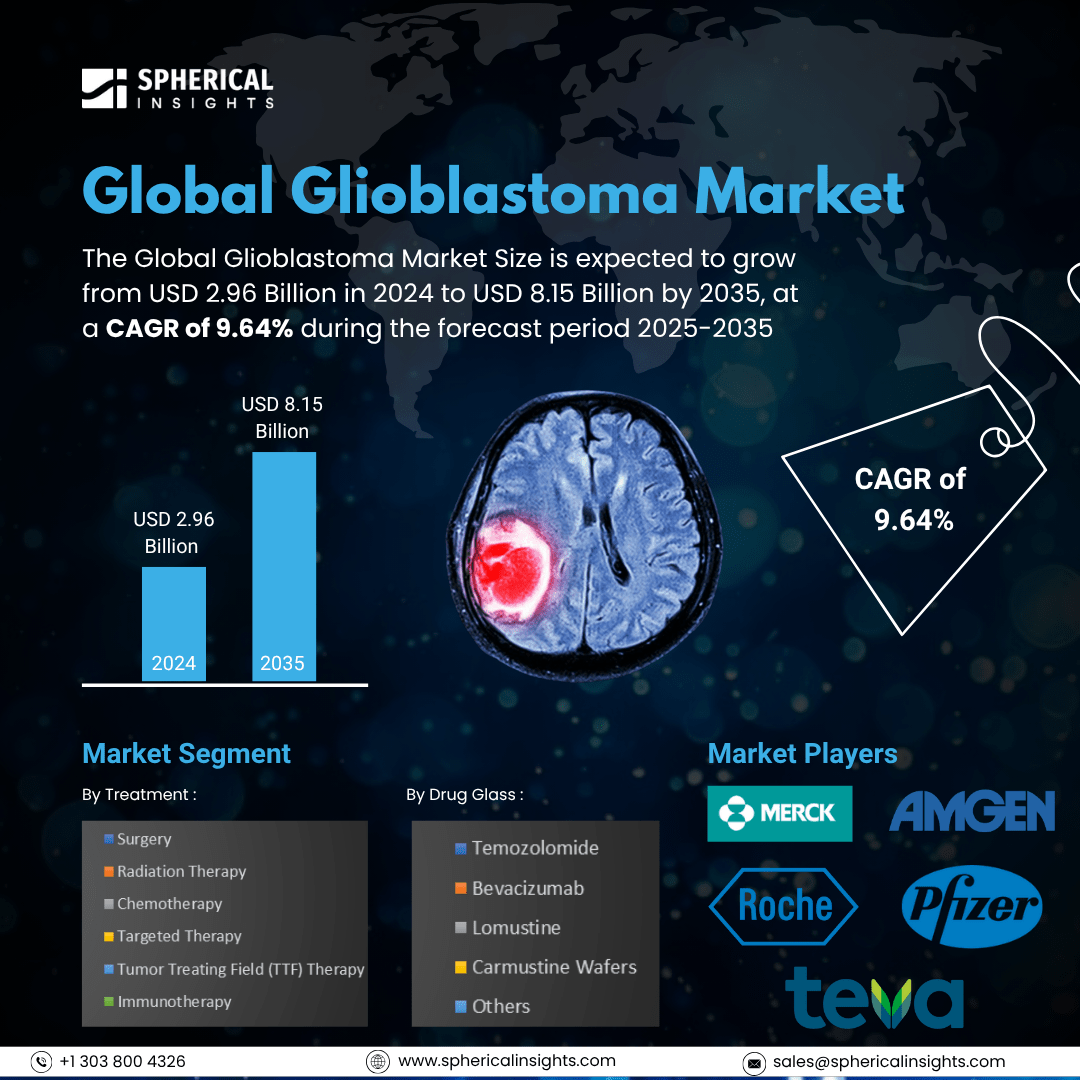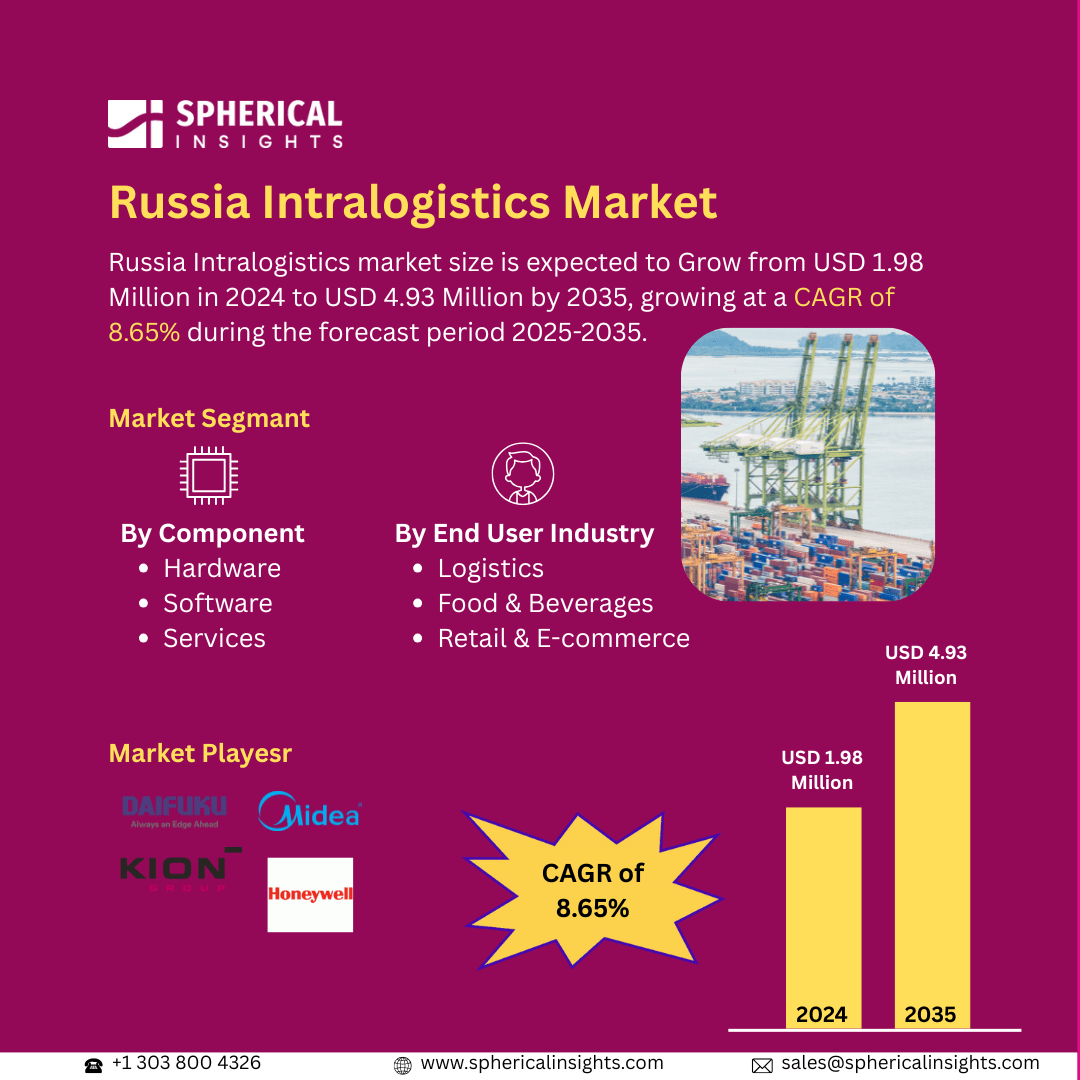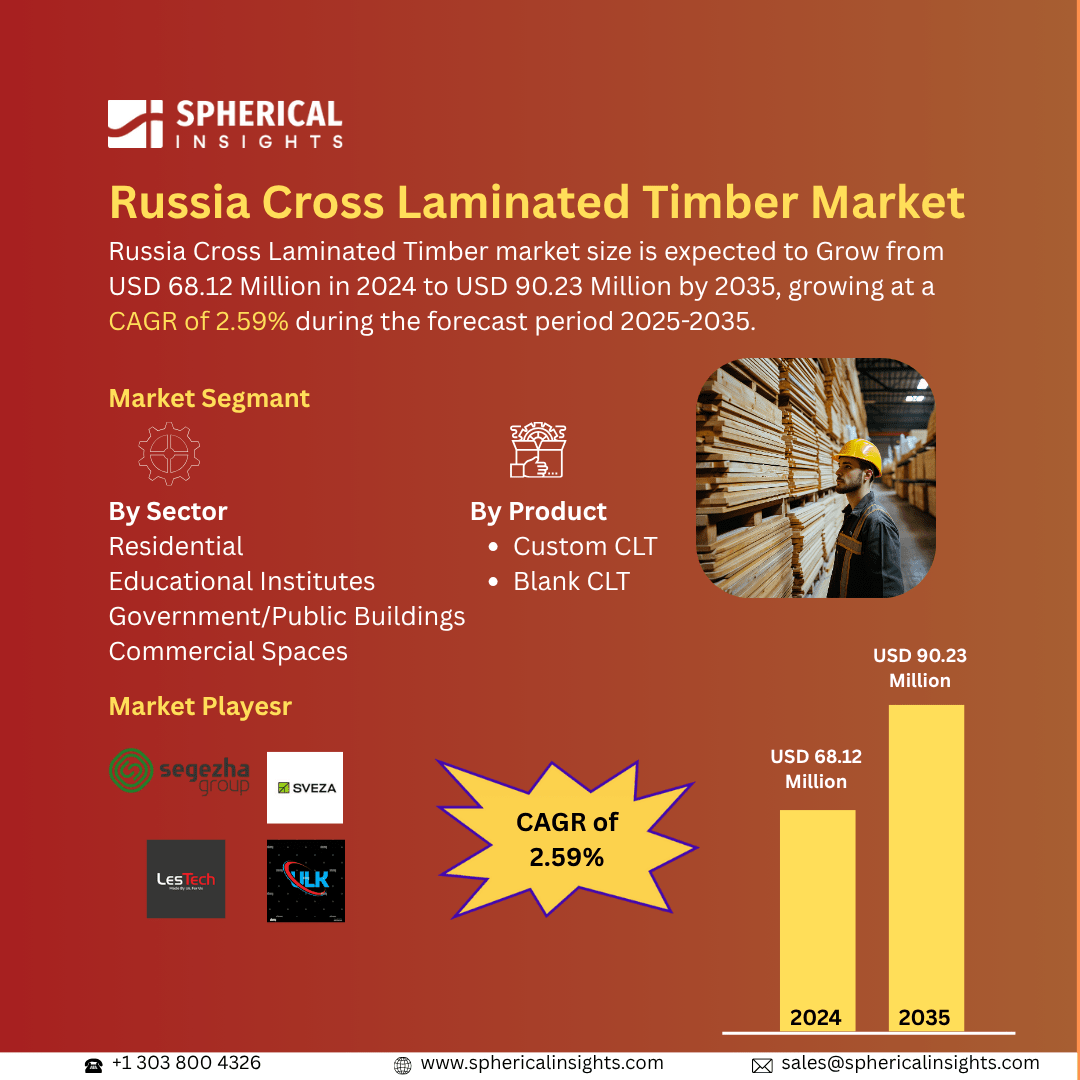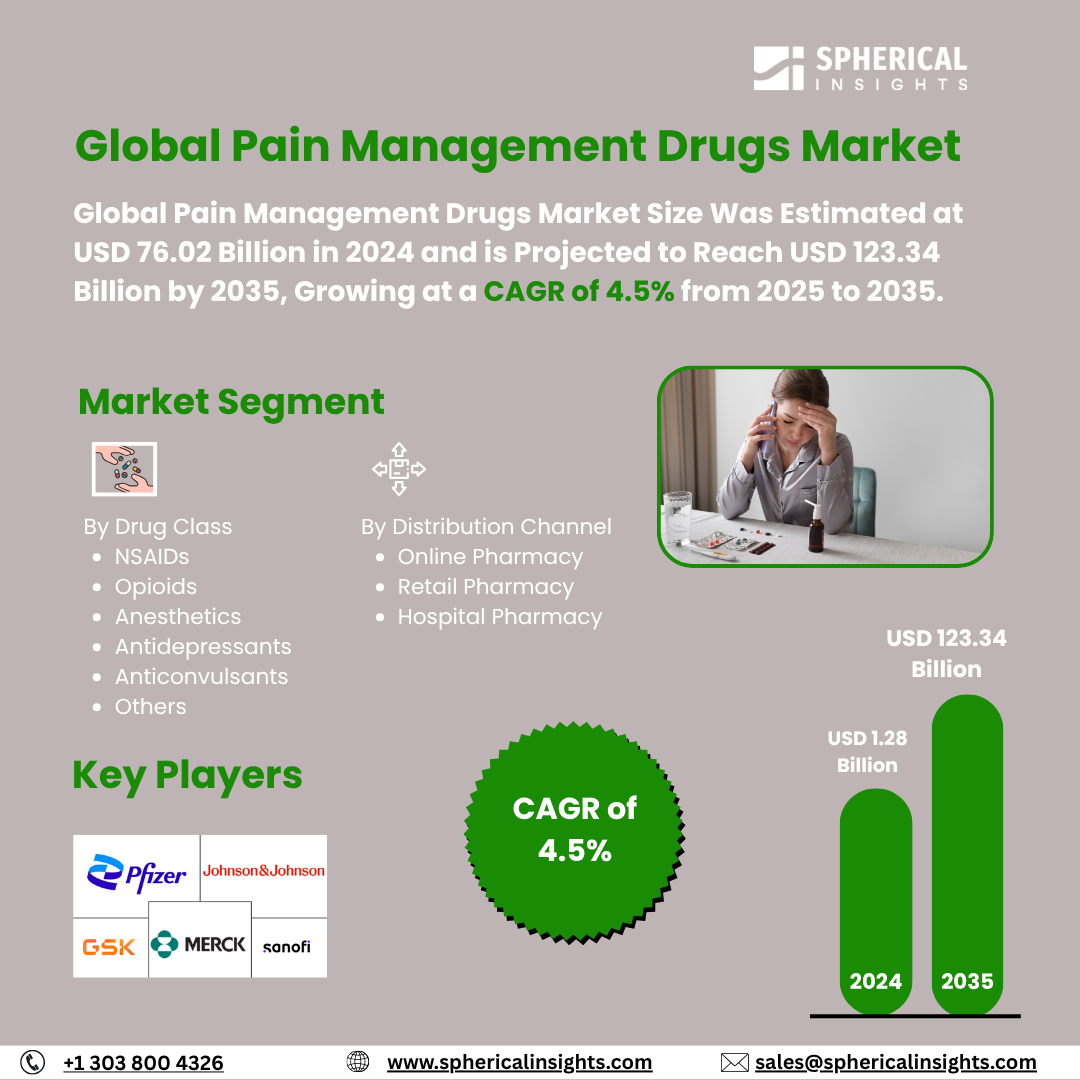- The Global Glioblastoma Market Size by its regional analysis was occupied by the North America in 2024.
- The US contributed to the largest incident-patient share, acquiring the largest market share in 2024.
- As per Spherical Insights & Consulting, The Global Glioblastoma Market is expected to grow from USD 2.96 Billion in 2024 to USD 8.15 Billion by 2035, at a CAGR of 9.64% during the forecast period 2025-2035, owing to the launch of new therapies in the market and the rise in the number of cases.
- The leading Glioblastoma Companies such as Merck & Co. Inc., Amgen. Inc., F. Hoffmann-La Roche Ltd., Pfizer Inc., Teva Pharmaceutical Industries Ltd., Sun Pharmaceutical Industries Ltd., Arbor Pharmaceuticals, LLC., Amneal Pharmaceuticals, Karyopharm Therapeutics, Inc., Boston Biomedical, Inc.
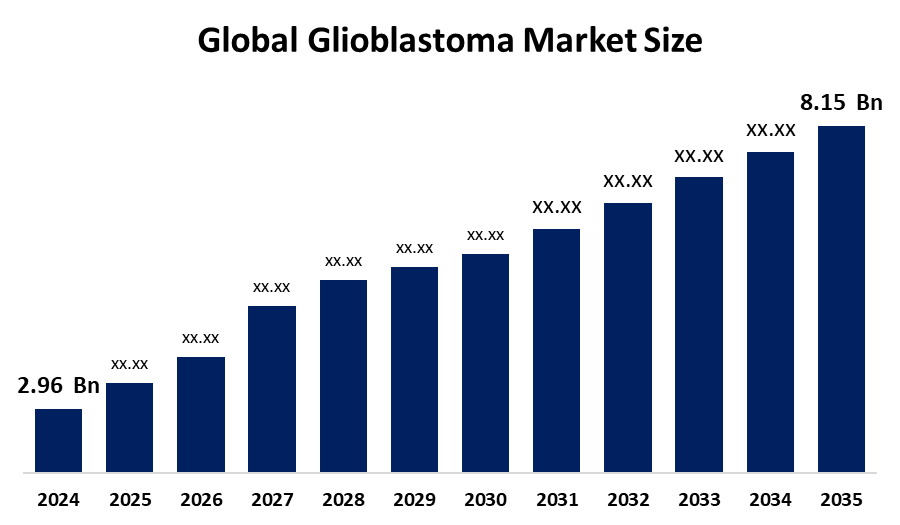
Glioblastoma Market: Understanding and Treatment Algorithm:
Glioblastoma is an aggressive and fast-growing type of brain tumor that originates in the glial cells of the brain or spinal cord. It is the most common and deadly form of malignant brain tumor in adults. Glioblastomas are difficult to treat due to their rapid growth, resistance to therapies, and tendency to infiltrate surrounding brain tissue.
Glioblastoma Diagnosis:
Glioblastoma Multiforme (GBM) diagnosis involves neuroimaging techniques such as magnetic resonance imaging (MRI) and computed tomography (CT) scans to detect and assess tumor size and location. Advanced imaging like MR spectroscopy and perfusion MRI may provide further detail. A definitive diagnosis is confirmed through biopsy and histopathological examination, often supported by molecular and genetic testing to guide treatment planning.
Glioblastoma Treatment
Glioblastoma Multiforme (GBM) treatment typically involves a combination of surgery, radiation therapy, and chemotherapy. Surgical resection aims to remove as much of the tumor as possible. This is followed by radiation therapy and chemotherapy, usually with temozolomide. Emerging treatments include targeted therapies, tumor-treating fields (TTF), and immunotherapies, which are being explored to improve survival and treatment response.
Glioblastoma Epidemiology
The disease epidemiology covered in the report provides historical as well as forecasted epidemiology segmented by Total Diagnosed Incident Population of Glioblastoma, Gender-specific Diagnosed Incidence of Glioblastoma, Type-specific Diagnosed Incidence of Glioblastoma, Age-specific Diagnosed Incidence of Glioblastoma, Diagnosed Incident Population based on Primary Site of Glioblastoma, and Diagnosed Incident Population based on Histologic Classification of Glioblastoma Tumor in the global market covering the North America, Europe, Asia-Pacific, Latin America, Middle East, and Africa from 2024 to 2035.
Principal Insights
This section offers a global overview of Glioblastoma epidemiology in major markets worldwide.
Country Wise- Glioblastoma Multiforme Epidemiology
- The epidemiology segment provides Glioblastoma prevalence data and findings across key regions worldwide, including North America, Europe (Germany, France, Italy, Spain, and the United Kingdom), Asia-Pacific (including Japan), Latin America, the Middle East, and Africa.
- According to NIH, Glioblastoma occurs at a rate of fewer than 5 cases per 100,000 people, and SEER projected 25,050 new diagnoses of brain and central nervous system cancers in 2022.
- Glioblastoma occurs 1.6 times more frequently in men than in women, and is twice as common in Caucasians than in individuals of African or Afro-American descent, with the lowest rates seen in Asian and American Indian populations.
- Glioblastoma, with an incidence rate of 3.19 per 100,000 persons in the United States and a median age of 64 years, it is uncommon in children.
- In Japan, the diagnosed incidence of glioblastoma was categorized into two types, with Primary Glioblastoma/IDH-wild Type recording the highest cases at 2,541 in 2021, and this number is expected to increase over the forecast period.
Glioblastoma Recent Developments:
- In February 2025, Siena (Italy) & Mumbai (India)- Sun Pharmaceutical Industries Limited (Reuters: SUN.BO, Bloomberg: SUNP IN, NSE: SUNPHARMA, BSE: 524715) (together with its subsidiaries and/or associated companies, “Sun Pharma”) and Philogen S.p.A. ("Philogen”) announced the successful completion of patient enrollment in the Phase III FIBROSARC trial for Soft Tissue Sarcoma (STS). All ongoing Fibromun trials remained on track with their expected timelines.
- In December 2025, Kazia Therapeutics announced progress on the regulatory pathway for Paxalisib following a Type C meeting with the FDA. The company discussed clinical trial design and potential approval strategies for Paxalisib in treating glioblastoma. This update marked an important step toward advancing Paxalisib’s development and potential regulatory approval for brain cancer therapy.
Glioblastoma Marketed Drugs:
Avastin (Bevacizumab) is a humanized recombinant monoclonal IgG1 antibody that inhibits angiogenesis by targeting vascular endothelial growth factor (VEGF). It binds to VEGF receptors VEGFR-1 and VEGFR-2 on endothelial cells’ surfaces. In December 2017, the US FDA fully approved bevacizumab for treating adults with recurrent glioblastoma after prior therapy failure.
The active ingredient in Temodar/Temodal is temozolomide, an imidazotetrazine derivative of the alkylating agent dacarbazine. Temozolomide treats various brain cancers, serving as a first-line therapy for glioblastoma and a second-line option for astrocytoma. Its effectiveness comes from its ability to alkylate and methylate DNA. In July 2006, Japan’s Ministry of Health, Labor and Welfare approved Temodal capsules for malignant glioma treatment.
Glioblastoma Emerging Therapies
- Immunotherapy: Immunotherapy has shown clinical benefits in several solid malignancies—in particular, melanoma and non-small cell lung cancer. However, in other solid tumours such as glioblastoma (GBM), the response to immunotherapy has been more variable, and except for anti-PD-1 for patients with microsatellite instable (MSI)+ cancers, no immunotherapy is currently approved for GBM patients.
- Targeted therapies: The emergence of targeted therapies in glioblastoma began with advances in molecular profiling, revealing key mutations like EGFR, IDH1, and MGMT. These discoveries enabled the development of therapies that specifically attack tumor-driving pathways, marking a shift toward more personalized and precise treatment strategies.
- Novel Chemotherapies: The emergence of novel chemotherapies in glioblastoma stems from the limitations of traditional drugs like temozolomide. New agents are being designed to overcome drug resistance, penetrate the blood-brain barrier more effectively, and target tumor-specific mechanisms, offering improved outcomes and reduced systemic toxicity.
Glioblastoma Market Outlook
- The glioblastoma market refers to the global industry focused on diagnosing, treating, and managing glioblastoma multiforme, an aggressive brain tumour. It includes pharmaceuticals, diagnostics, and research pipelines.
- Market growth is driven by rising incidence, innovative therapies, clinical trials, and increasing investment in precision medicine and advanced treatment technologies.
- Advances in molecular biology and genetic research have accelerated the development of targeted therapies and immunotherapies, offering new hope for improved patient outcomes. The growing adoption of precision medicine and novel drug delivery systems, such as oncolytic viruses and nanotechnology, is expected to further enhance treatment efficacy.
- The glioblastoma market offers growth opportunities through precision medicine, immunotherapy, AI-driven diagnostics, and novel drug delivery systems. Strategic partnerships and clinical trials accelerate innovation, while rising investments and a growing patient need drive demand for more effective, targeted therapies.
- Regulatory agencies have shown a favourable stance toward approving innovative therapies, boosting market expansion.
- However, challenges including high treatment costs, limited effectiveness of current therapies, and difficulties in early diagnosis may restrain growth.
- Overall, continuous research, increasing healthcare investments, and collaboration among pharmaceutical companies will drive the glioblastoma market forward globally.
Glioblastoma Market segmentation
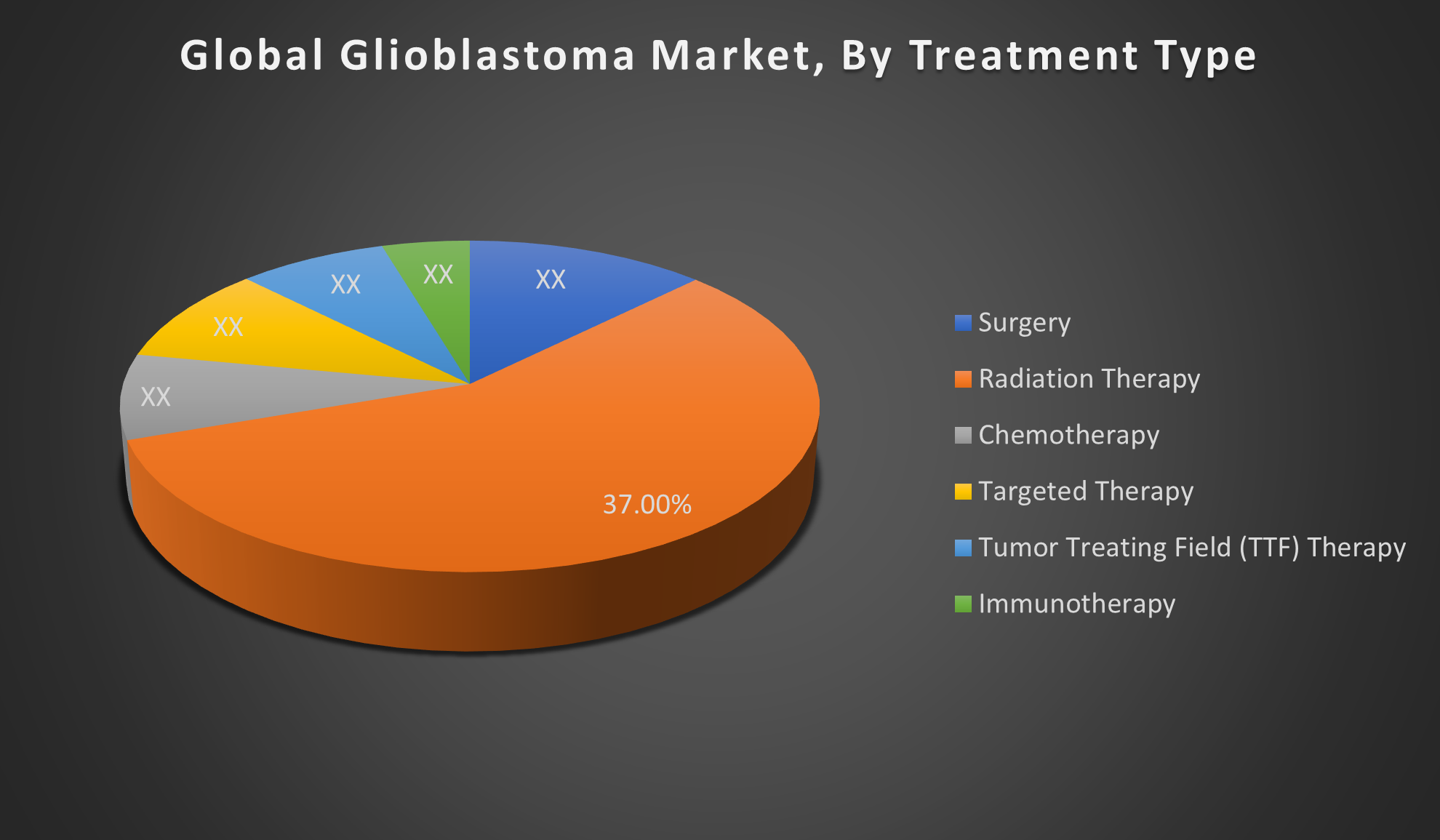
Radiation therapy dominates the glioblastoma market due to its role as a standard post-surgical treatment. It effectively delays tumour progression, is widely accessible, and supported by clinical guidelines. Technological advancements like IMRT and proton therapy further enhance its precision and treatment outcomes, reinforcing its market position.
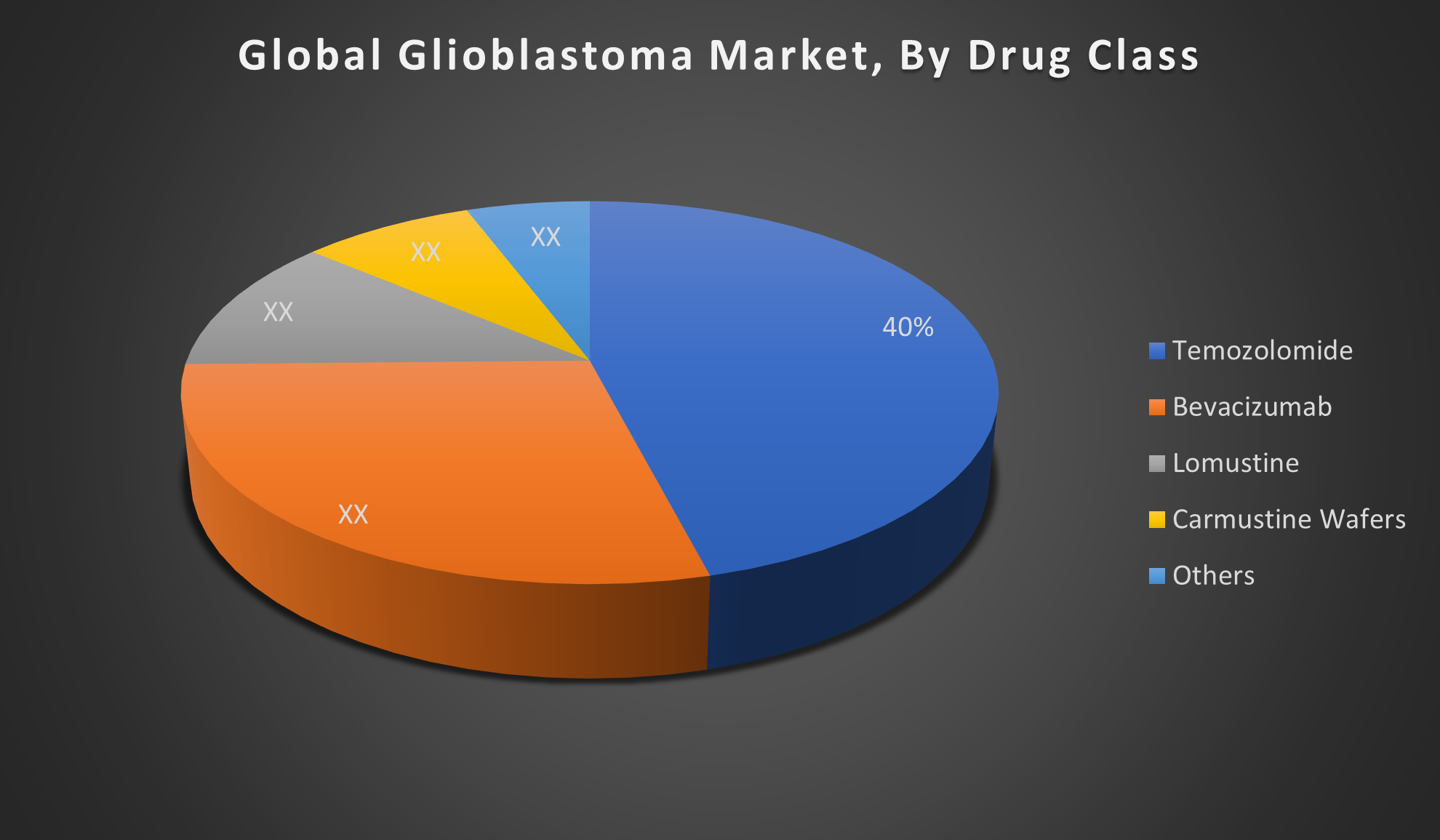
Temozolomide dominates the glioblastoma market due to its proven effectiveness combined with radiation therapy, improving survival rates. Its oral administration and ability to cross the blood-brain barrier make it widely preferred.
Glioblastoma Therapeutics Market Report Scope
- The glioblastoma therapeutics market report provides a detailed overview, covering its causes, symptoms, disease progression, and existing treatment options.
- Detailed insights into glioblastoma’s epidemiology and therapeutic approaches are included.
- Additionally, a comprehensive review of existing and emerging glioblastoma therapies is provided, including an evaluation of new treatments expected to influence the current glioblastoma treatment market landscape.
- The report includes a detailed review of the glioblastoma therapeutics market, both historical and forecasted, highlighting the global drug reach.
- The Patient-Based Glioblastoma Market Forecasting report offers valuable insights into trends shaping the global glioblastoma market, helping to develop effective business strategies.
Glioblastoma Market Report Insights
- Forecasting Market Trends Based on Patient Data and Disease Rates
- Glioblastoma Therapeutic Approaches in Glioblastoma
- Review Of Drugs in Development for Glioblastoma
- Market, Growth and Trends in Glioblastoma
- Market Opportunities in Glioblastoma Treatment
- Effects Of Future Therapies on Glioblastoma Treatment.
Glioblastoma Market Report Key Strengths
- 15 Years Glioblastoma Market Forecast
- Global Coverage
- Glioblastoma Epidemiology Segmentation
- Key Cross Competition
Glioblastoma Market Report Assessment
- Present Practices in the Glioblastoma Treatment Market
- Review of Investigational Glioblastoma Drugs
- Attractiveness of the Glioblastoma Drug Market
- Glioblastoma Market Drivers
- Glioblastoma Market Barriers
- SWOT
- Attribute Analysis
